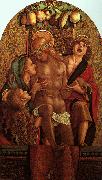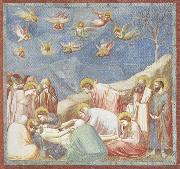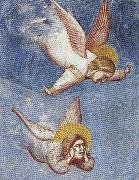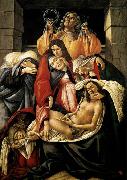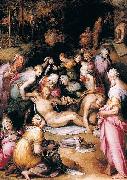Wholesale Oil Painting Reproductions No Minimum and Door to Door! |
|||||||||||
|
|
|||||||||||

|
|||||||||||
|
|
|
||||||||
All Carlo Crivelli Oil Paintings |
||||||||
|
|
||||||||
|
|
||||||||
|
Artist Introduction: 1430-1495
Italian
Carlo Crivelli Locations
1495). He produced many large, multi-partite altarpieces in which his highly charged, emotional use of line, delight in detail, decoration and citric colours, often set against a gold ground, convey an intensity of expression unequalled elsewhere in Italy. His mastery of perspective was also used for dramatic impact. As he worked in isolation in the Marches, his style only had local influence. In the 19th century, however, he was one of the most collected of 15th-century Italian painters. |
||||||||
|
|
||||||||
|
Lamentation over the Dead Christ Painting ID:: 670 |
1485
Museum of Fine Arts, Boston |
|||||||
Height Width |
INS/CM Quality |
|||||||
|
X |
| |||||||
|
|
||||||||
All GIOTTO di Bondone Oil Paintings |
||||||||
|
|
||||||||
|
|
||||||||
|
Artist Introduction: Italian Early Renaissance Painter, 1267-1337
Italian painter and designer. In his own time and place he had an unrivalled reputation as the best painter and as an innovator, superior to all his predecessors, and he became the first post-Classical artist whose fame extended beyond his lifetime and native city. This was partly the consequence of the rich literary culture of two of the cities where he worked, Padua and Florence. Writing on art in Florence was pioneered by gifted authors and, although not quite art criticism, it involved the comparison of local artists in terms of quality. The most famous single appreciation is found in Dante's verses (Purgatory x) of 1315 or earlier. Exemplifying the transience of fame, first with poets and manuscript illuminators, Dante then remarked that the fame of Cimabue, who had supposed himself to be the leader in painting, had now been displaced by Giotto. Ironically, this text was one factor that forestalled the similar eclipse of Giotto's fame, which was clearly implied by the poet. |
||||||||
|
|
||||||||
|
|
Lamentation over the Dead Christ Painting ID:: 30389 |
mk68
Fresco
Padua
Arena Chapel
c.1306
Italy
|
||||||
Height Width |
INS/CM Quality |
|||||||
|
X |
| |||||||
|
|
||||||||
All GIOTTO di Bondone Oil Paintings |
||||||||
|
|
||||||||
|
|
||||||||
|
Artist Introduction: Italian Early Renaissance Painter, 1267-1337
Italian painter and designer. In his own time and place he had an unrivalled reputation as the best painter and as an innovator, superior to all his predecessors, and he became the first post-Classical artist whose fame extended beyond his lifetime and native city. This was partly the consequence of the rich literary culture of two of the cities where he worked, Padua and Florence. Writing on art in Florence was pioneered by gifted authors and, although not quite art criticism, it involved the comparison of local artists in terms of quality. The most famous single appreciation is found in Dante's verses (Purgatory x) of 1315 or earlier. Exemplifying the transience of fame, first with poets and manuscript illuminators, Dante then remarked that the fame of Cimabue, who had supposed himself to be the leader in painting, had now been displaced by Giotto. Ironically, this text was one factor that forestalled the similar eclipse of Giotto's fame, which was clearly implied by the poet. |
||||||||
|
|
||||||||
|
|
Lamentation over the Dead CHrist Painting ID:: 30947 |
mk68
c.1306
|
||||||
Height Width |
INS/CM Quality |
|||||||
|
X |
| |||||||
|
|
||||||||
All Domenicho Ghirlandaio Oil Paintings |
||||||||
|
|
||||||||
|
|
||||||||
|
Artist Introduction: Renaissance Artists , 1449-94 |
||||||||
|
|
||||||||
|
|
Lamentation over the Dead Christ Painting ID:: 32338 |
c. 1472
Fresco |
||||||
Height Width |
INS/CM Quality |
|||||||
|
X |
| |||||||
|
|
||||||||
All BOTTICELLI, Sandro Oil Paintings |
||||||||
|
|
||||||||
|
|
||||||||
|
Artist Introduction: Italian Early Renaissance Painter, 1445-1510
Alessandro di Mariano di Vanni Filipepi, better known as Sandro Botticelli or Il Botticello ("The Little Barrel"; March 1, 1445 ?C May 17, 1510) was an Italian painter of the Florentine school during the Early Renaissance (Quattrocento). Less than a hundred years later, this movement, under the patronage of Lorenzo de' Medici, was characterized by Giorgio Vasari as a "golden age", a thought, suitably enough, he expressed at the head of his Vita of Botticelli. His posthumous reputation suffered until the late 19th century; since then his work has been seen to represent the linear grace of Early Renaissance painting, and The Birth of Venus and Primavera rank now among the most familiar masterpieces of Florentine art.
Details of Botticelli's life are sparse, but we know that he became an apprentice when he was about fourteen years old, which would indicate that he received a fuller education than did other Renaissance artists. Vasari reported that he was initially trained as a goldsmith by his brother Antonio. Probably by 1462 he was apprenticed to Fra Filippo Lippi; many of his early works have been attributed to the elder master, and attributions continue to be uncertain. Influenced also by the monumentality of Masaccio's painting, it was from Lippi that Botticelli learned a more intimate and detailed manner. As recently discovered, during this time, Botticelli could have traveled to Hungary, participating in the creation of a fresco in Esztergom, ordered in the workshop of Fra Filippo Lippi by Vitez J??nos, then archbishop of Hungary.
By 1470 Botticelli had his own workshop. Even at this early date his work was characterized by a conception of the figure as if seen in low relief, drawn with clear contours, and minimizing strong contrasts of light and shadow which would indicate fully modeled forms. |
||||||||
|
|
||||||||
|
|
Lamentation over the Dead Christ Painting ID:: 44291 |
c. 1495
Tempera on panel,
107 x 71 cm |
||||||
Height Width |
INS/CM Quality |
|||||||
|
X |
| |||||||
|
|
||||||||
All Naldini, Giovanni Battista Oil Paintings |
||||||||
|
|
||||||||
|
|
||||||||
|
Artist Introduction: Italian, 1537-91
was an Italian painter of a late-Mannerism in Florence. His first apprenticeship (1549-57) was in the studio of Jacopo Pontormo. He went from Rome for a number of months following 1560, and was recruited to work for Giorgio Vasari in 1562. He painted two crowded, mannerist canvas for the Studiolo of Francesco I in the Palazzo Vecchio: the Allegory of Dreams and the Gathering of Ambergris. He supplied altarpieces to Santa Maria Novella and Santa Croce. He painted an altarpiece of Calling of Saint Matthew for the Salviati Chapel in San Marco, where he worked alongside Francesco Morandini. Ultimately, he is aptly described by Freedberg as displaying work distantly derivative from the style of Andrea del Sarto, as expressed by Naldini's two mentors and Sarto's two pupils: Pontormo and Vasari. |
||||||||
|
|
||||||||
|
|
Lamentation over the Dead Christ Painting ID:: 88811 |
between 1572(1572) and 1573(1573)
Medium Oil on poplar
cyf |
||||||
Height Width |
INS/CM Quality |
|||||||
|
X |
| |||||||
|
|
||||||||
|
Prev Next
|
||||||||
|
|
||||||||
|
Related Paintings to Naldini, Giovanni Battista :. |
||||||||
|
|
||||||||
|
CONTACT US |
